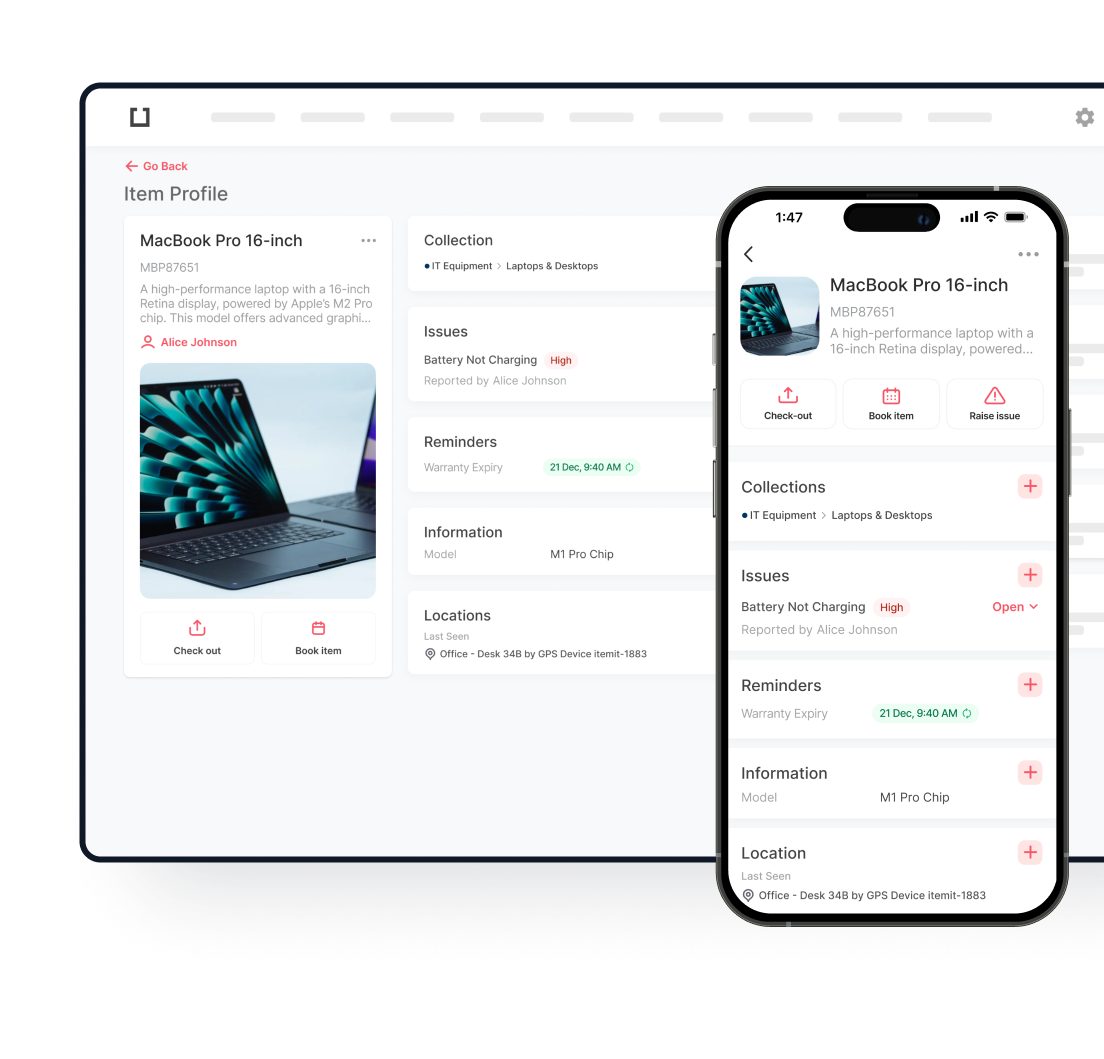
If you’re looking to scale your business, you must handle your assets effectively. Knowing what you own and how effectively each bit of equipment is working means you can squeeze out more use, cutting down costs. This is where asset tagging and management come in.
There are a lot of things that can go wrong with your equipment, and when you’re a smaller business, every piece of kit is irreplaceable. You need to know how effective laptops are, how much they cost to run, and when to replace them, for example.
Asset tagging and management can help you keep control of a fixed asset register. To find out why a fixed asset register is so important, check out the blog below:
What is Asset Tagging and Management?
What you get out of it is a register of your assets, which is clearly visible and editable. So, you’ll be able to implement IT asset management to track where your laptops are and information related to them, such as PAT test information.
You’ll be able to add all manner of information to your assets using an asset tagging system, depending on what your asset tracking requirements are.
For example, you’ll be able to use an issues management system to track maintenance. This is incredibly helpful if you’re tracking assets remotely, as you’ll be able to see which ones require maintenance quickly.
What You Can Do With Asset Management Software
With this data, you’ll be able to:
- Save time
- Save money
- Reduce the risk of duplicates
- Improve your tax return process
- Maintain assets more effectively
- Check assets out when a colleague is using them
How? Simply due to the functionality asset management software provides you with.
Every level of your business process can be improved. Having a fixed asset register in your asset management software, as opposed to a spreadsheet, allows you to replicate your expenses on your tax returns for all of your fixed assets.
Adding the purchase price and purchase date means that you can simply export this information and log it in your returns accurately. Therefore, you avoid fines and offset your profits further, as you won’t have any zombie assets weighing you down.
The Benefits of Asset Tagging: Why It’s a Game-Changer for Business Growth
Faster Asset Tracking and Reduced Downtime
Example: A construction company using RFID tags can scan multiple tools at once, ensuring nothing gets left behind at a job site.
Better Financial Control and Cost Savings
- Prevent duplicate purchases by knowing exactly what’s available.
- Track depreciation for more accurate financial reporting.
- Reduce equipment loss by improving accountability among employees.
Example: An IT firm tracking laptops with QR codes reduces unnecessary replacements by 20% annually.
Seamless Maintenance and Compliance Management
- Schedule automated maintenance reminders for critical assets.
- Keep digital records of repairs, inspections, and compliance reports.
- Avoid regulatory fines by ensuring assets meet industry standards.
Example: A hospital using RFID tags for medical equipment reduces compliance violations and maintenance delays
Improved Security and Theft Prevention
- Tamper-proof and GPS-enabled tags help detect unauthorized movement.
- Audit logs show who last accessed or moved an asset.
- Insurance claims become easier with detailed tracking history.
Example: A retail chain using RFID-based security tags reduces inventory shrinkage by 30% per year.
Scalability Without Operational Chaos
- Seamless expansion—new locations and teams can instantly integrate with existing asset records.
- Efficient remote asset management for hybrid workforces.
- Data-driven decision-making based on asset utilization trends.
Example: A logistics company using barcode-based tracking scales from one warehouse to five without losing operational efficiency.
Enhanced Customer Experience and Service Quality
- Faster order fulfillment due to precise inventory tracking.
- Fewer service delays when equipment is well-maintained.
- More accurate billing and rental tracking for asset-based businesses.
Example: A rental car company using asset tags reduces check-in/check-out times by 40%, leading to higher customer satisfaction.
A Simple Upgrade with Big Returns
How to Select and Buy the Right Asset Tags for Your Business

Choosing the right asset tags isn’t as simple as grabbing the first option you see. Your business needs a tagging system that fits its industry, environment, and growth plans. Here’s how to make the right decision:
Determine the Type of Assets You’re Tagging
- Office Equipment & IT Assets → QR codes or barcodes work well.
- Machinery & Industrial Tools → Durable metal or RFID tags.
- Outdoor Assets & Harsh Environments → Weatherproof, UV-resistant tags.
- Medical & High-Value Items → Tamper-proof or embedded NFC/RFID for added security.
Choose the Right Tagging Technology
- Barcodes – Affordable and easy to implement, but require line-of-sight scanning.
- QR Codes – Store more data than barcodes and can be scanned using smartphones.
- RFID Tags – Allow bulk scanning without direct visibility, which is ideal for warehouses.
- NFC Tags – Great for close-range scanning and secure authentication.
- GPS-Enabled Tags – Best for real-time tracking of mobile assets.
Think about scalability—will the system still work when your asset inventory doubles?
Match the Material to Your Environment
- Paper or Plastic Tags – Best for indoor use on office equipment.
- Polyester Tags – These are more durable and resistant to chemicals and scratches.
- Aluminum or Metal Tags – Ideal for outdoor or industrial environments.
- Tamper-proof labels – Deter theft and unauthorized asset removal.
Decide on the Attachment Method
- Adhesive Stickers – Best for smooth surfaces (laptops, office desks).
- Screw-Mounted or Riveted Tags – Ideal for machinery and heavy-duty equipment.
- Cable Ties or Loops – Good for tools, cables, and movable assets.
- Embedded or Engraved Tags – Permanent, high-security solution for valuable assets.
Check Compatibility with Your Asset Management System
Buy from a Reputable Supplier
- Bulk pricing for scalability if you’re tagging hundreds or thousands of assets.
- Custom printing options for logos, serial numbers, or color-coding.
- Durability guarantees – ask about resistance to water, heat, and chemicals.
Start Small and Scale Up
How Asset Tracking Helps You Scale Your Business
In turn, this information helps you scale because it helps you get more out of your equipment. When you get the most out of your equipment, you spend less money, and you save necessary time.
itemit’s asset tagging and management functionality will help you scale. We have a huge suite of features, including GPS tracking and fixed RFID asset tracking, so if you’re interested, let us know!
You can also book a demo with the button below or fill in the free trial form to start your 14-day free trial!

Try itemit
Choose a better way to track your assets. Start your free 14-day trial now!

Keep Learning
itemit Blog
Tips, guides, industry best practices, and news.
The Key to Asset Reliability: Preventive Maintenance and Real-Time Tracking
Enhance asset reliability with preventive maintenance and real-time tracking. Reduce downtime, improve efficiency, and extend asset lifespan with smart strategies.
Optimising Asset Performance Management: Strategies for Maximum Efficiency
Explore practical strategies to optimise asset performance management, maximise efficiency, and enhance productivity with predictive and real-time monitoring tools.
Asset Integrity Management: Strategies for Reliable Operations
Discover how asset integrity management ensures safety, efficiency, and longevity of your assets. Learn effective strategies to protect your investments.




